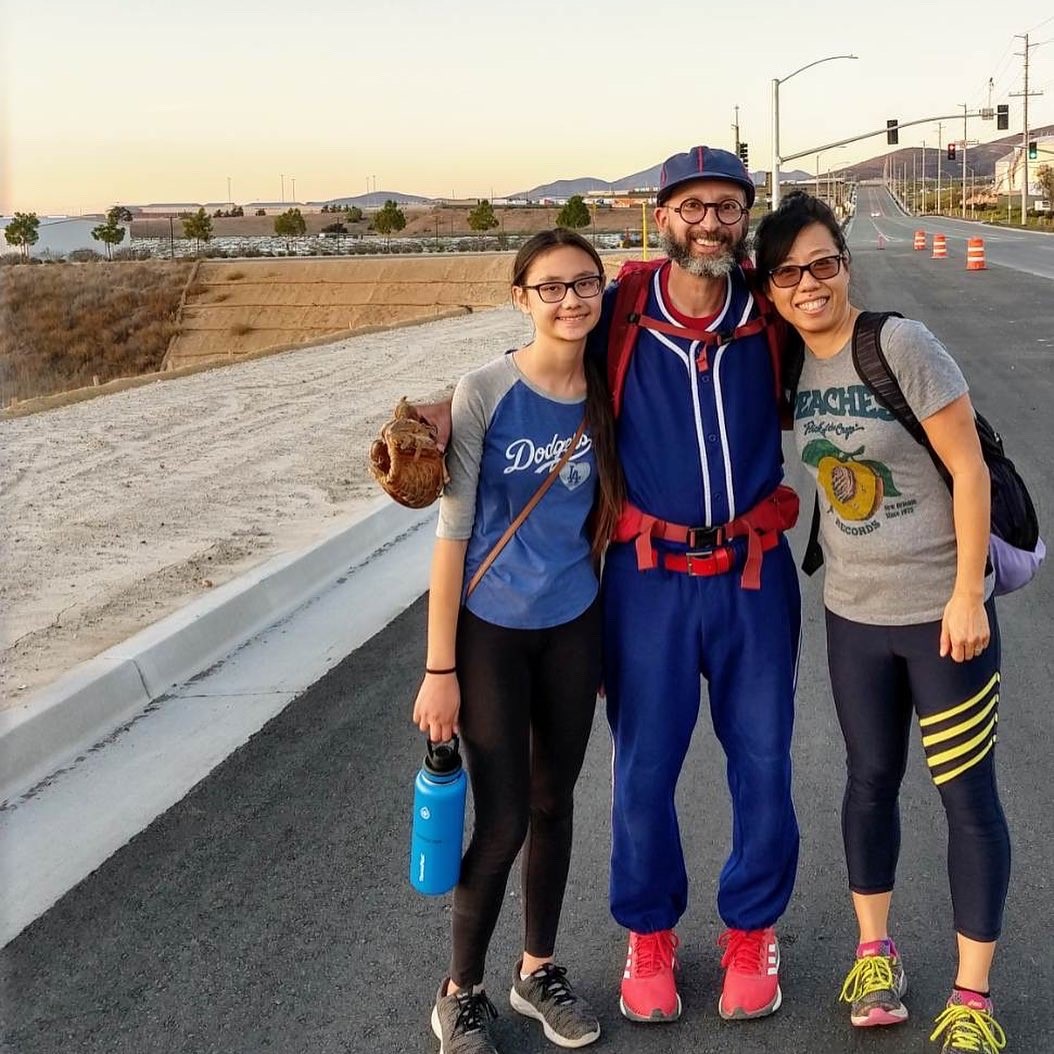Last November, I got to participate in an art project by artist Joel Tauber called Border Ball. Every day for 40 days he walked from the Otay Mesa Port of Entry at the US-Mexico border to the nearest detention center, about 3 miles away. As he walked, he tossed a baseball to people he met, encouraging them to open up about their experience with baseball or the border. He tied baseball into this project because it’s something that brings people together and creates community. As a kid, he used to dream about becoming a professional baseball player, and while that didn’t happen, it reminds him about how people dream about coming to America in search of freedom, shelter, or safety. So each day, he walked the 6 miles round trip, sometimes alone, sometimes with others. He got to talk to all sorts of people; some for, some against the border wall. Some people lived in San Diego, while others lived in Tijuana and commuted in each day. He talked to border patrol agents, some there because they believe in the wall, while others are there just for the job, a way to make ends meet.
As I walked with him, there were a few things that really caught my attention. The first was the landscape. If you’re far enough away, you can see over the wall into Tijuana. There are houses and buildings right up against the border. On our side, there is almost nothing. A couple of restaurants, a hotel, an oil refinery, and not much else. It’s clear that nobody lives there, and as we walked outside of the main section of the buildings, we met very few people, just the occasional worker, or skateboarder. We walked past the oil refinery, and upon coming to the detention center, there were two paths, the city sidewalk and a dirt path that’s private property of the detention center. There were trees that were clearly not trimmed in a while. All that to say that it was kind of depressing. Also, since the dirt path belongs to the detention center, you’re not allowed to walk on it, so it serves as another border. Not that they don’t have enough borders. There are three barbed wire fences, and workers that drive in vans slowly around the perimeter. As we stood outside the center, I noticed that the people in the vans circled about every three minutes, carefully watching us. Another thing that I was surprised about was that there were no windows. I thought maybe there was some kind of courtyard in the middle, but we looked at the roof, and saw only fans, vents, and things like that; no windows, no courtyard. As we were walking back, the sun started to set, making the sky purple. It was really pretty to see the sky and the mountains, and all the specks of light from Mexico. And despite how depressing we’ve made this place, it had a really pretty view, but then I realized that the people in the detention center probably don’t get to even see the outside very much, much less experience it.
Joel’s goal with the project is to spark a conversation and to share peoples’ experiences relating to our border. He believes that together, we can learn about each other and everybody’s unique situation. Joel’s approach to this was not unlike Jesus’. He walked with people, getting to know them and who they are. I think that it’s important to remember as we discuss refugees that Jesus was a refugee, facing some of the same challenges as the refugees in our country today, and we should wonder what it would be like if Jesus were to be in these people’s shoes.


